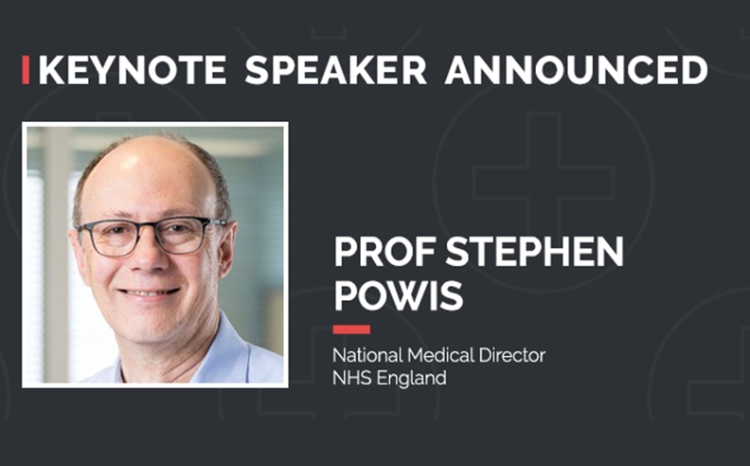Drug monitoring, systematised
- 10 February 2014

The development of SystemTDM involved the breaking of much new ground for Norfolk and Suffolk NHS Foundation Trust.
The recall and reminder service for therapeutic drug monitoring is the first piece of software to be developed as a commercial product by the organisation – where it was also developed.
However, the initial idea behind the product – which won the ‘innovation in integration and interoperability’ category of the EHI Awards 2013 in association with CGI – is far from new.
Tim Anderson, a pharmacist at the trust, as well as the project and commercial development lead, explains that it actually dates back to 2002.
“We had problems with lithium toxicity in the area,” he says [patients on lithium, which is widely used to treat bipolar disorders, need regular monitoring to make sure that it does not cause the level of calcium in their blood to reach dangerous levels].
“There were some serious untoward incidents – no deaths, but some really quite unpleasant things had happened because a GP missed a couple of results here and there.”
The response at that time was an Access database, which became fully operational across Norfolk in 2005. It sent reminder letters to GPs when patients needed tests, as well as keeping patients updated.
But by 2009-10, when the National Patient Safety Agency issued a directive for lithium monitoring, it had become clear that, while it was helpful, the database was not up to meeting the challenge encountered by so many healthcare IT systems: straightforward data sharing.
Moving on from a database
“The original system was, it’s a fair to say, a bit clunky,” says Caroline Perrement, senior systems architect at Proteo Ltd, which provided the trust with IT support for the development of System TDM.
“It generated lots of really good data showing how patients were getting the right number of tests, and there were less incidents and problems.
“Really [our job] was to take that – the basic, hand-built Access database – and turn it into something a lot more robust to allow everybody involved in the care of the patient to see that data.
“I think lots of different teams across the NHS have the same issue we were trying to solve – sharing when things transition from one team to another. When responsibility transfers, how do people know what's gone on and get the full picture?”
The answer Proteo and the trust came up with was a web-based system. Perrement says this made it possible to side-step many of the traditional problems of sharing data.
“We can allow people to access something without having to port it around and having to send data to some other system,” she explains.
“We can just grant [appropriate people] access. All of these different parties – secondary care staff, GPs, patients, pharmacists – are able to get access to the one view of the world and share that information.”
Part of the day job
Even when information can be easily viewed or shared, there is often a difficult job to persuade staff and patients to use it. Anderson admits the trust had an advantage here.
“Through the Access database work, we already had background culture of doing this work. So when we came to doing extra work, we were already pushing at an open door.”
Which is not to say the project was obstacle free. “Some of the problems, and this is where the trust was fighting with itself – like any NHS organisation I guess – came [from the idea that] if you're doing improvement work, you're not actually doing your job,” says Anderson.
“My argument was: my job is to improve it. To highlight things in a micro sense – this drug treatment isn't right, change it – is no different to a highlighting things in a bigger sense – this system isn't right, change it. So my role was exactly the same: improve care. It's just another mechanism of doing that.”
He admits there were some worries about data security and sharing too, which he sees largely as “the NHS chasing shadows”. But the debate came as somewhat of a surprise to Perrement.
“My background is in designing systems and it would just seem obvious to me that I was building this system you would obviously include these people, you would give them a log-in, you would grant them access to what they need to see,” she explains.
“But there was definitely a level of fear about doing that. It was something that I would have thought was taken for granted, because it just makes perfect sense to share that information.
“Obviously, you've got to ensure you've got the right security model, but all of that is completely possible and you just have to go through the right level of due diligence to make sure it's secure. Then, there's no reason you shouldn't be doing this.”
Open to other drugs and trusts
Other organisations are, it seems, coming to the same realisation. Four NHS trusts have expressed interest in taking System TDM.
Importantly, this may not necessarily be for lithium monitoring. Anderson and Perrement both stress that the intention was to consider interoperability in a wider sense when developing System TDM – to design a system which could be used for any medication that needs regular monitoring, and by any trust.
“We were very clear early on was that this is not just about lithium,” explains Anderson. “It's really around monitoring the physical health of people with mental illness.
“They are underserved, they don’t really get followed up very well, and they’re often reluctant to engage in services. It’s really around connecting the disparate parts of the system; integrating the total care with the patient at the centre of it.”

If you have been inspired by the work of Norfolk and Suffolk NHS Foundation Trust, and know of a trust, team or company that is taking a similarly innovative approach, why not enter the EHI Awards 2014?
This year’s awards, which will be presented at a black tie dinner in October, have more categories than ever before. There are 14 categories to enter, the details of which can be found on the dedicated awards website. Entries must be received by 9 May.
For information about sponsorship opportunities for the awards or to book tickets, contact EHI’s events team on 0207 785 6924.




